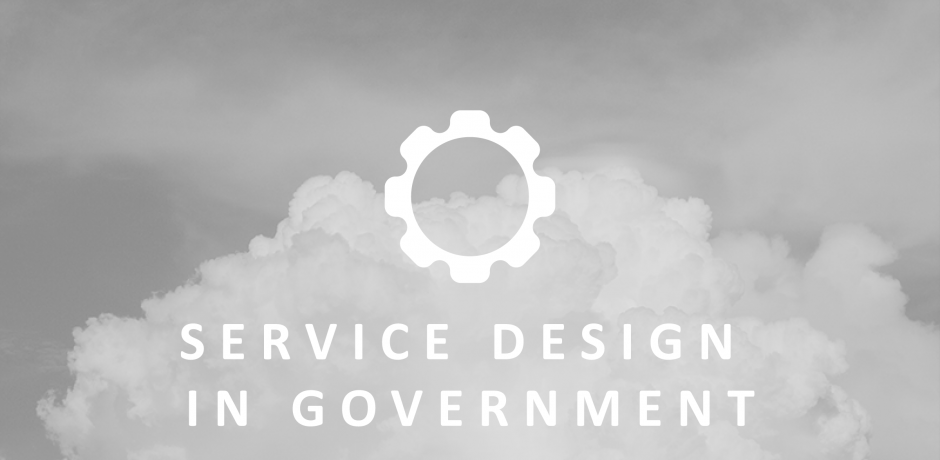Our Blog
Springtime has arrived and flowers are beginning to bloom. A new season is here and a new collection of colors has appeared. It’s time for spring cleaning, both at home and at work. Government forms and processes, just like closets, get cluttered over time. Bring in the feeling of “fresh” and “new” into your customer experience through service design.
What is Service Design?
Overview
The concept of service design is like that of product design. Product design creates usable products by defining real people’s problems and crafting solutions. Service design focuses on delivering peak service experiences through a user-centered, collaborative, data-driven, and iterative journey of experimentation and discovery.
“When you have two coffee shops right next to each other that each sell the exact same coffee at the exact same price, service design is what makes you walk into one and not the other.”
– Marc Fontijn, Co-Founder of 31Volts
Principles of service design
In their book “This is Service Design Thinking”, Marc Stickdorn and Jakob Schneider outline five principles of service design:
1) User-centered
Understand the user’s journey through empathy. What were they expecting and what did they receive? Did they perceive your service to meet those expectations? How do different users interact with and experience the service? How much effort does it take to complete the process with no prior experience or knowledge?
2) Co-creative
All stakeholder groups within the service ecosystem should collaborate in the design process. Optimal user experience requires a top-level commitment of resources and vision. Each user touchpoint must flow seamlessly, which demands that service providers are aligned and committed to a user-driven process. Engaging all stakeholders can ensure that this cohesion is achieved.
3) Sequencing
Every interaction the user has with your service is an experience opportunity. Each touchpoint provides the perception of competence or chaos and a feeling of excitement or exasperation. It is thus on the organization’s shoulders to create user value at each step of the process.
4) Evidencing
The intangible nature of services can be enhanced with a tangible token. Integrating physical elements can act as memory triggers and establish an emotional connection. For example, souvenir photographs at amusement parks and mints left on a hotel pillow provide evidence a service was provided.
5) Holistic
Services are not delivered in a vacuum. When designing service processes, consider the larger context in which they are provided. Are workplace incentives aligned with the service goal? Is quality achieved consistently? Additionally, have we considered every sense (touching, seeing, hearing, etc.) that is involved in the process?
Who’s Doing Service Design?
All levels of government are engaging in service design. Cities like Boston, Denver, Miami, and New York are engaging employees to enhance internal- and external-facing services. Federal governments in countries such as Denmark, New Zealand, Singapore, the United Kingdom, and the United States of America (at GSA and OPM) are improving both paper-based and digital services for the 21st century. Non-profits such as IDEO and Public Policy Lab assist municipalities, federal governments, and international development organizations to have a greater impact for their clients.
The U.S. Department of Agriculture (USDA) worked with the Lab@OPM to apply human-centered design and service design principles to improve the National School Lunch Program. Through in-depth interviews and observations, the group gained new insights into systemic challenges and unmet needs. The new application should reduce error rates and improper payment rates (estimated at 15.8%, or $1.9 billion in over- and under-payments).
18F assisted U.S. Citizenship and Immigration Services (USCIS) with their naturalization process. After interviewing people in the naturalization process and USCIS staff, visiting immigration offices, and listening to customer service center calls, 18F had a clear picture of the experience and obstacles. 18F and USCIS employees made the Application for Naturalization form easier to follow and complete, used plain language in more communications, and created and improved systems to find benefits, see notices, and study for the Civics Test. Their work won two awards.
Government agencies at all levels are finding that putting themselves in the customer’s shoes and reimagining the process can improve compliance rates, reduce error frequencies, and result in taxpayer savings.
Check out the resources below to learn more about service design!
Sources and Resources:
https://www.nngroup.com/articles/service-design-101/
http://www.iimagineservicedesign.com/gallery-post-sliced/
https://moz.com/blog/applying-service-design-online
Greg Reger is a Senior Associate who connects the dots between data, processes, and people to enhance public services. He has dedicated his career to make government work better.


